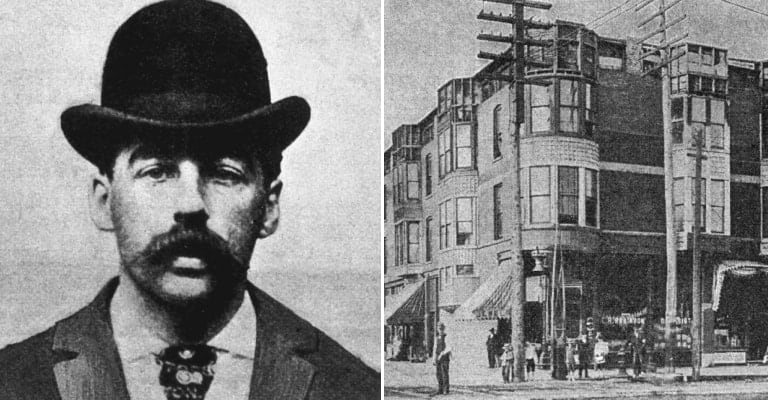He has been called America’s first serial killer. He wasn’t, many serial killers preceded him, Including the Harpe Brothers and several others. His name wasn’t H. H. Holmes, he claimed to kill many more people than he actually murdered, including some who were still alive, and besides being a serial murderer he was a bigamist, a thief, and was suspected by some of being the London slasher known to history as Jack the Ripper. He is said to have preferred to kill young women of less than conspicuous background, but he wasn’t particularly picky when it came to selecting his victims, and the only murder for which he was convicted was of his male business partner.

Eventually Holmes confessed to more than two dozen murders. Though subsequent writers have attributed many more to him, some of them accusing him of killing more than two hundred people, only nine murders have been confirmed as being his actions. He exhibited an almost craftsmen’s like pride in his killings in his confessions, expressing nothing in the way of remorse before meeting his end on the gallows, on which he denied killing anyone. In the 1940s he became the subject of articles in the thrilling crime magazines of the day, and much of his life was fictionalized, creating a myth which is still repeated, much of it false. A con artist in life, his life continues to con Americans, and he became a mythologized demon.
Here are some of the facts about Herman Webster Mudgett, who entered history and legend as H. H. Holmes.

1. Claims of animal cruelty as a child were baseless
Herman Mudgett grew up in New England, the son of Methodist parents who worked as farmers and in animal husbandry. Legends have since grown around him that he spent a large portion of his youth tormenting and torturing animals, in the manner ascribed to later serial killers. There is nothing to indicate that these legends are true. Nor is there hard evidence that he was the victim of abuse at the hands of his father as a boy. Later writers, attempting to sensationalize his childhood, have written about schoolmates which went missing when Mudgett was a child, this too is uncorroborated by contemporaneous accounts. As the third born of three siblings, Mudgett’s childhood was mostly unremarkable, and he was bright enough to complete high school by the age of sixteen.
Following high school Mudgett worked for a time as a teacher and private tutor in his native Gilmanton, New Hampshire. On Independence Day, 1878, the seventeen year old Mudgett married Clara Lovering in Alton, New Hamsphire. He studied briefly at the University of Vermont before entering medical school at the University of Michigan, where in accordance with the standard practice of the time the study of human anatomy was supported by the dissection of cadavers. Mudgett had prior experience in human dissection from a brief period when he apprenticed under Dr. Nahum Wight prior to medical school. He completed his course of study at Michigan in 1884, though by that time Clara, according to friends the victim of abuse at Mudgett’s hands, had returned without him to New Hampshire. Other accounts have her tiring of his philandering. They nonetheless remained married.

